
Jen, of
use real butter chose Chinese dumplings to be the
Daring Cooks' June challenge. When I saw this, the first filling that came to mind was Paneer. This is my first time participating in the
Daring Cooks'; I had fun all the way.
When I started thinking about Chinese dumplings, Ulundhu kozhukkattai came to my mind. The wrapper is made using rice flour and the filling would be Urad dal usli. This is traditionally made during Ganesh chaturthi, accompanied by Ganeshji's favorite, the very famous Modakam. The filling in Modakam is poornam (made by cooking grated coconut in jaggery & ghee, spiced with cardamom). To describe the shape of modakam, imagine a white pearly & soft ball the size of a lemon with one pointy end, filled with gooey yummy poornam. The savory one is boat shaped, pretty much like the shape of the chinese dumplings, except that they weren't pleated like the chinese dumplings. My dad tells me that the savory one was made boat shaped inorder to distinguish between this and the sweet version. Yummy.
I decided to go for all purpose flour. To make it slightly more nutritious, I added an itsy bitsy bit of oat flour. I didn't want to risk making it taste oatsey (I just invented a new word? lol) but still wanted to satisfy my 'make it healthy' reminder that pops up everytime :) so I added just 2 tablespoons. I got around 16-18 dumplings, so each would have had approximately 2/18ths of a tablespoon of oat flour in it. Very little, yet something. So on hindsight, I'll make it double the next time. I got this oatsey smart idea from
Usha after reading her post about
Oat Pav. Thanks Usha, for the awesome tip!
So, going to the recipe:
Ingredients for the Paneer filling -
Paneer - I made paneer using six cups of whole milk. The paneer I got was almost the size of a large grapefruit. I know that sounds kinda vague, but I am pretty sure it should have weighed at least a pound. Even slightly more. Crumble the paneer into smaller chunks and keep aside.
Onion - 1/2 of 1 large red onion, chopped finely
Tomato - 1 Roma tomato, chopped finely
Cilantro - 5 or 6 stems, leaves and all, cleaned and washed
Coriander powder - 1 tsp
Chilly powder - 1 tsp
Turmeric powder - 1/4 teaspoon
Cumin seeds (Jeera) - 1/4 teaspoon
Spice powder -Saunf (Fennel seeds) - 1/4 teaspoon
Cloves - 5 or 6
Cardamom - 5 or 6
Dry roast the spices one after the other in a pan to toast well and release the oils, make a fine powder. I use my favourite gadget, my goodold mortar and pestle for this.
Method to make the filling -Heat a pan, add about 1 tablespoon oil. Add the cumin seeds. When it splutters, add the onion and saute for about 3 minutes until tender and transluscent. Now add the tomatoes, turmeric powder and a pinch or two of salt. Cook for a few minutes until the tomatoes are mushy and cooked. Add the coriander and chilly powder and fry for about a minute without burning. Add the crumbled paneer and mix in well. Break all the lumps and mix evenly. Once it is uniformly mixed, add the spice powder and combine well and remove from fire. Add the chopped cilantro and mix well. Check for salt, set aside in a bowl to cool.
Ingredients for the wrapper -Unbleached all purpose flour - 1 cup
Salt - 1/4 teaspoon
Oats flour - 2 tablespoons ( I powder steel cut oats in my mixie and save it in a ziplock in my freezer to use anytime)
Water - 1/4 cup or slightly more
Method to make the wrappers-Combine the flours in a bowl, add salt and mix well. Make a dough adding water as required. The dough should not be sticky. Knead it well for a couple minutes and make balls the size of gooseberries (nellikkai).
Flatten each ball as thin as possible, and make pleats. I learnt this technique from the user Lisa at the Daring Kitchen. Lisa has detailed pictures in the daring cooks' forum. Very helpful pics Lisa. Thanks for all your effort for putting it together. Here is
Lisa's post at her blog.
Apparently you could make 3, 4 or 6 pleats on each side of the dumpling. Not wanting to make it too complicated, I went for just 3. Basically you make 3 pleats on one side, 3 pleats on the other, fill it with the filling. Wet the inside of the pleats with water, then stick them together.

 Method to cook the Dumplings -
Method to cook the Dumplings -Dumplings can be cooked in a variety of different ways- boiled, steamed, or pan fried.
Potstickers, which are essentially dumplings, are saute-ed on one side, and then steam cooked. In other words, you would add oil to a flat bottomed pan, then arrange the dumplings on the pan and heat it briefly to brown the bottom side, then add water to the pan and close it with a lid. The dumplings would be cooked in the steam. They are then served with dipping sauce, with the brown sides facing up.
I decided to do that and happily I realized I could easily just pan fry them without water. I picked a round bottomed pan for this, added about 1 and 1/2 tablespoons of oil and arranged about 6 -8 of the dumplings. With my handy pair of tongs, I shifted them back and forth to make sure as much of the wrapper was getting cooked. When brown on one side, I turned them over and did the same. Then, I turned the heat to low, and closed the lid. Now with a keen eye on it (a keen pair of eyes actually), I let it cook for a few minutes on each side. I had about 3 batches to pan-fry.
I had initially planned to serve this with khatti-meethi chutney but due to shortage of time, ended up serving my potstickers with ketchup. We had this for our evening chai. Yummy, all of us loved it. Pretty filling snack I should say :)

I find this has to be eaten right away when pan-fried. When it is cool, it seems to have a tendency to harden when cooked this way. I have 3 of them that were leftovers, I'll find out for sure tomorrow. A couple minutes in the microwave should warm them up, I am guessing. The next time, I might try just steaming them.
I already have a bunch of fillings lined up in my mind for this. Amma had a brilliant idea too. Potstickers, I see you being a regular in our kitchen.
Enjoy!
 I had about a cup of black beans that I had left on the countertop for sprouting. I usually leave a few different kinds of beans now and then to sprout. One evening when I got home from work, Amma had made this lovely broccoli thoran (stirfry). Along with rice, pulisseri (a yoghurt based South Indian Curry) rasam & papads, it was a lovely dinner. With parents here, we sure are getting pampered.
I had about a cup of black beans that I had left on the countertop for sprouting. I usually leave a few different kinds of beans now and then to sprout. One evening when I got home from work, Amma had made this lovely broccoli thoran (stirfry). Along with rice, pulisseri (a yoghurt based South Indian Curry) rasam & papads, it was a lovely dinner. With parents here, we sure are getting pampered.


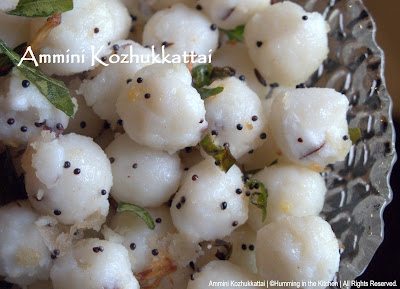 This dish is a childhood favourite of mine. This savoury snack is regularly made in Palakkad Iyer households during Navrathri season as a neivedyam (offering to the diety).
This dish is a childhood favourite of mine. This savoury snack is regularly made in Palakkad Iyer households during Navrathri season as a neivedyam (offering to the diety). This is my entry to Cooking for Kids, a monthly event started by
This is my entry to Cooking for Kids, a monthly event started by 











 If this is not one of the easiest of rice dishes, what is? Not only is it easy, the handful of fresh mint makes it lipsmackingly delicious. Paired with
If this is not one of the easiest of rice dishes, what is? Not only is it easy, the handful of fresh mint makes it lipsmackingly delicious. Paired with 


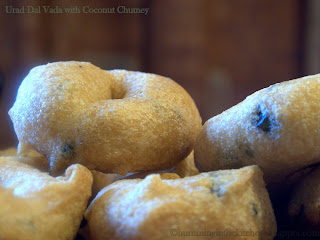








 There you have it, creamy and delectable mango pudding. We loved having this luscious pudding for dessert after our Sunday lunch. Made from the high calorie condensed milk and cream cheese, what's not to like? :)
There you have it, creamy and delectable mango pudding. We loved having this luscious pudding for dessert after our Sunday lunch. Made from the high calorie condensed milk and cream cheese, what's not to like? :)
 I can picture us having it with plain basmati rice, topped with one big blob of ghee. Mmm.. that would be perfect as a healthy comfort food.
I can picture us having it with plain basmati rice, topped with one big blob of ghee. Mmm.. that would be perfect as a healthy comfort food.

 The Dal looks very pretty doesn't it? :)
The Dal looks very pretty doesn't it? :)


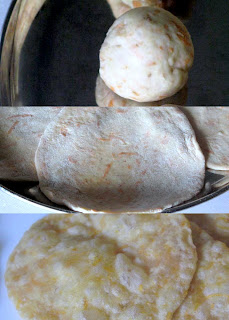
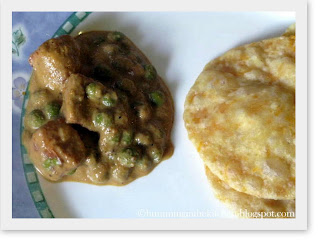




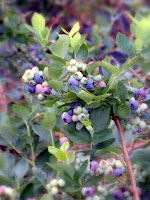
 Oh the verdict. As a tweaked-on-the-fly muffin, this turned out to be reallly good. Not to mention the flax and bran that mommy sneaked in! Priceless.
Oh the verdict. As a tweaked-on-the-fly muffin, this turned out to be reallly good. Not to mention the flax and bran that mommy sneaked in! Priceless.